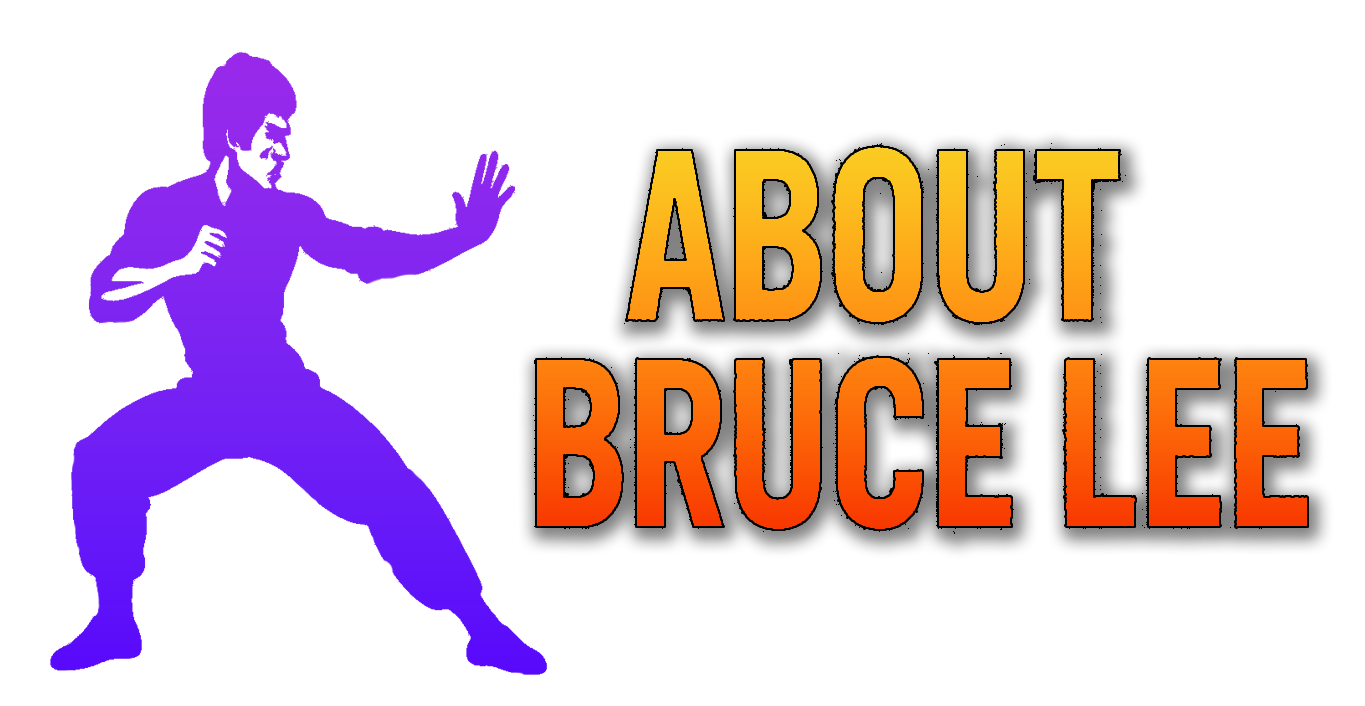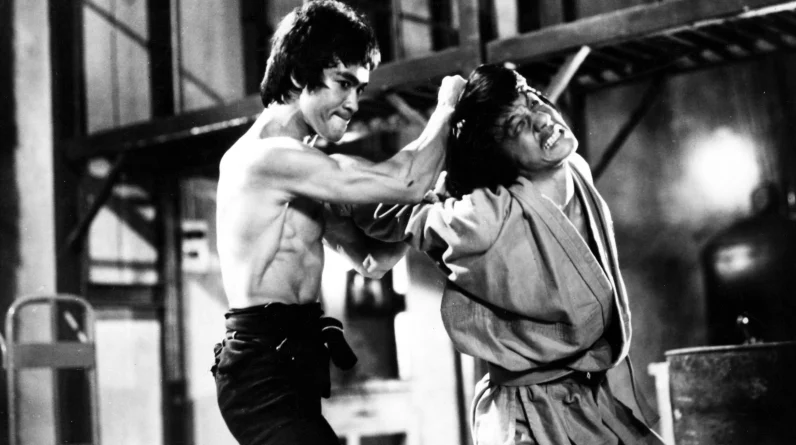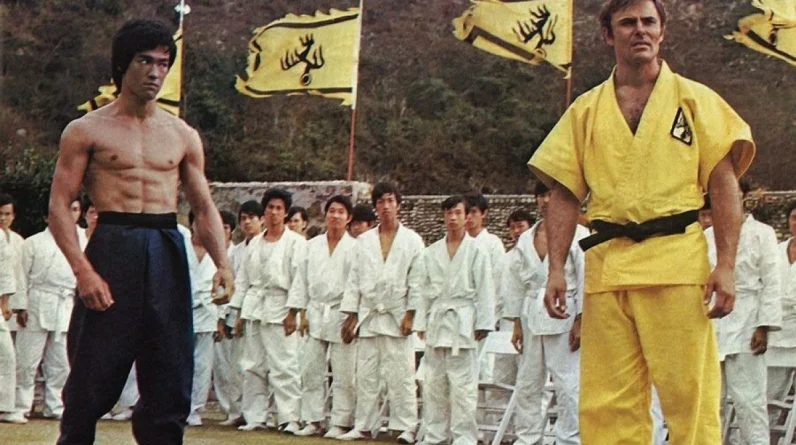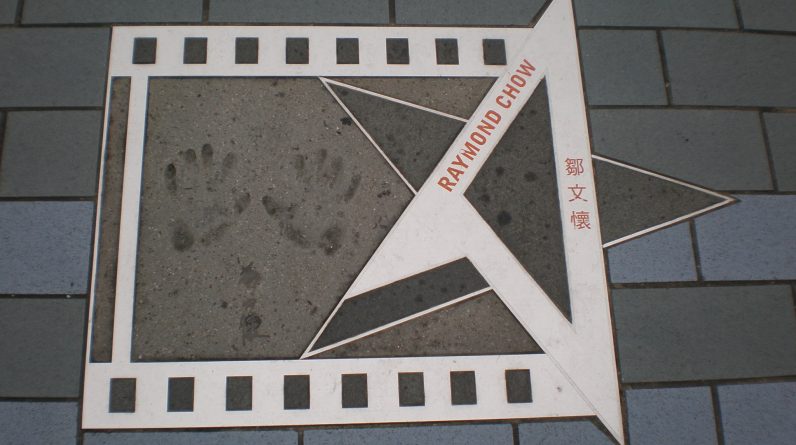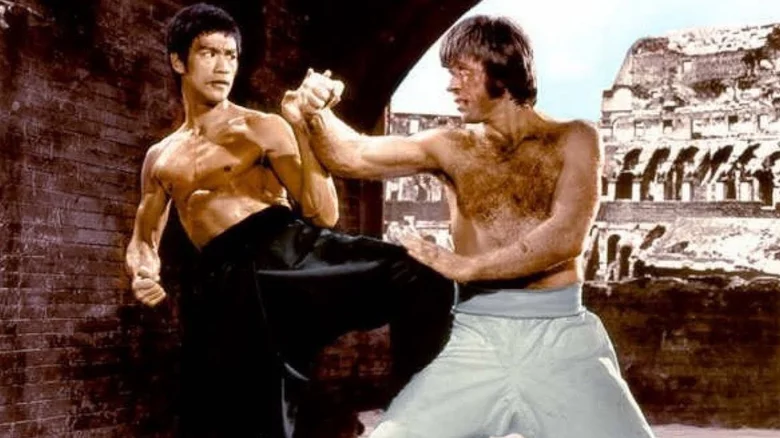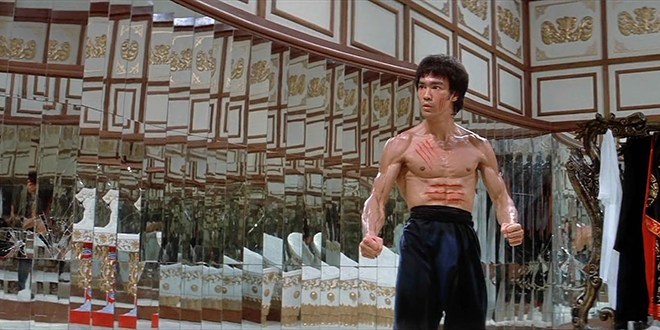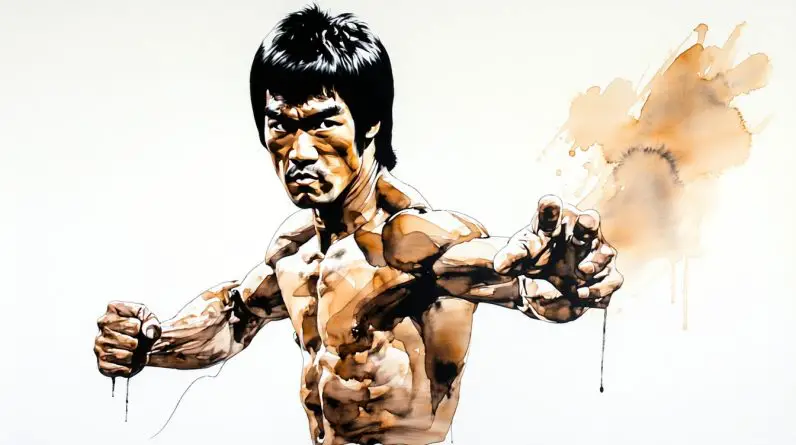
When you think about Bruce Lee’s cinematic collaborators, you might picture a select group of people who simply made action movies with him. In reality, the team behind this martial arts legend was much more extensive. You had directors who shaped his on-screen image, co-stars who pushed his performances to new levels, stunt performers who refined their craft while observing the legend, and behind-the-scenes experts who choreographed each iconic fight sequence. By exploring all those relationships, you can better appreciate the enduring influence of Bruce Lee’s films. Let’s look at how these creative partnerships came together, what they achieved, and how you can keep marveling at the synergy that fueled Lee’s cinematic legacy.
Understand Bruce Lee’s Global Impact
Bruce Lee wasn’t just another martial arts star. He became an international phenomenon whose films broke cultural barriers. Movies like The Big Boss (1971) and Fist of Fury (1972) delivered bold messages against oppression, resonating strongly with audiences across Asia, the United States, and beyond. In fact, Fist of Fury tackled themes related to segregation and colonization, which deeply connected with many African American viewers after the Civil Rights Act of 1964 (Andscape).
Lee’s rise came at a time when Hollywood rarely cast Asian leads in meaningful roles. He was determined to change the narrative. That determination helped him collaborate with producers, directors, and co-stars who saw the potential for something fresh and exciting. Those key relationships drove him to stardom and allowed him to broaden the representation of Asian talent in Western cinema. Because of these groundbreaking partnerships, the entire martial arts genre changed, and countless modern action films, including The Matrix and Kill Bill, owe a huge debt to Bruce Lee (Global Trekker).
Why Collaborations Mattered
Lee might have been the face of his films, but his collaborators formed the backbone of his success. They helped polish scripts, choreograph fight scenes, secure funding, and distribute his work worldwide. Consider them the crucial supporting pillars of each Bruce Lee project. By learning about these individuals, you can see how Lee’s on-screen power was amplified by being surrounded with sharp minds and complementary talents.
Explore Key Early Collaborations
Lo Wei and The Big Boss
To kick things off, Bruce Lee’s earliest major success in Hong Kong cinema came courtesy of the director Lo Wei. Their first collaboration, The Big Boss (1971), was a smash hit. Lo Wei gave Lee the freedom to showcase his martial arts prowess and unique charisma, catching local moviegoers by surprise. While Lo Wei was known for a more traditional, drama-focused filming style, Lee’s energetic approach challenged him to highlight swift, fluid fight sequences that had not been common in Hong Kong action films.
Although Lo Wei is not among the internal links provided, his role is tied closely to some of Lee’s co-stars who do appear here. With The Big Boss, Lee shared the screen with important cast members who went on to shape his path moving forward.
The Role of James Tien
One such early collaborator was James Tien. He appeared alongside Bruce Lee in a few films, including The Big Boss and Fist of Fury. Tien was already an established Hong Kong star, and his presence gave Lee’s movies additional momentum. Tien often portrayed spirited supporting roles, sometimes as a sidekick and sometimes as a rival. Their on-screen chemistry highlighted Lee’s lightning-fast technique and Tien’s skill in precise, theatrical martial arts moves.
Introducing Nora Miao
When you watch Fist of Fury or The Big Boss, you’ll likely notice a warm presence next to Lee. That’s Nora Miao, an actress who played notable female leads in Lee’s early works. Although she usually appeared in romantic or concerned-support roles, Miao’s performances enriched the emotional stakes. When Lee took on villains or overcame enormous challenges, Miao’s characters added sincerity and heart to the narrative. Without these on-screen connections and the vulnerability they delivered, Bruce Lee’s characters might not have felt as multidimensional.
Way Of The Dragon Partners
After two big hits in Hong Kong, Bruce Lee wanted more creative control. So he wrote and directed The Way of the Dragon (1972). This time, he was at the helm, but he still relied on trusted peers and new allies to bring his vision to life. The film is famous for its showdown in Rome’s Colosseum, where Lee’s character battles another martial artist who would soon become a household name.
Chuck Norris
You can hardly discuss “The Way of the Dragon” without mentioning Chuck Norris. Norris was already making a name for himself in the United States as a champion in karate, but joining Lee’s movie brought his talents to a global audience. Their climatic fight scene was staged by Lee and stands as one of the most memorable martial arts showdowns ever captured on film. Lee’s speed and Norris’s raw power blended into a captivating cat-and-mouse dance that remains a highlight of martial arts cinema.
Interestingly, Norris also became one of Lee’s personal students. Their relationship went beyond just filming. They trained together, exchanged ideas about martial arts, and helped each other grow. This cross-pollination between Lee’s Jeet Kune Do philosophy and Norris’s karate background made “The Way of the Dragon” an illuminating partnership not just for fans, but for the ongoing conversation about mixed martial arts. If you want to learn more about their bond, you might explore the details of how Norris carried on some of Lee’s training methods in his own schools.
Robert (Bob) Wall
You might also recall the tough secondary villain in The Way of the Dragon, played by Robert (Bob) Wall. Though not as famous as Chuck Norris, Bob Wall was another of Lee’s martial arts acquaintances in real life. He had a knack for playing the intimidating henchman, giving Lee’s characters a worthy adversary with a rugged edge. Wall and Lee developed a trust that carried over into their next project together, Enter the Dragon. Through these collaborations, Wall proved that martial artists could adapt to the demands of on-camera fighting, bridging the gap between real combat skills and cinematic storytelling.
Enter The Dragon Team
Enter the Dragon (1973) was Bruce Lee’s leap into big-budget Hollywood filmmaking. Produced in collaboration with Warner Bros. and Hong Kong’s Golden Harvest, this film exploded onto the international scene and pulled in over $20 million in the United States alone, a massive sum at the time (Andscape). In addition, the Library of Congress selected Enter the Dragon for preservation in 2004 because of its cultural, historical, and aesthetic value. But behind this iconic movie stood a host of professionals who guided it to glory.
Director Robert Clouse
Robert Clouse was the individual entrusted with directing Lee’s first Hollywood co-production. Clouse had a background in action-oriented films, so he was ready to try something fresh. Working with Lee was no small task. While Lee was the star, he loved to take an active role in choreographing and shaping scenes. The two men sometimes clashed over creative decisions, but that tension fueled the intensity you see on screen. Even with potential disagreements, they found common ground in their commitment to building an electrifying martial arts saga for worldwide audiences.
John Saxon
As another leading man in Enter the Dragon, John Saxon provided a Western perspective in the film’s multinational ensemble. Saxon played Roper, a cool gambler who enters the villain’s tournament. Though Saxon wasn’t a real-life martial artist at Lee’s level, his presence added a sharp, confident flair. He also developed mutual respect with Lee, which carried into their scenes together. By bringing a Western action style into the mix, Saxon’s portrayal helped the film resonate with American audiences who might otherwise have overlooked a primarily Chinese-led story.
Jim Kelly
Jim Kelly took on the role of Williams, a martial artist who stands out with his lightning speed and unique fighting stance. Kelly’s background was in karate, and he rose to pop-culture prominence after this film. The pairing of Kelly’s cool swagger with Lee’s unstoppable skill gave Enter the Dragon an extra shot of diversity and excitement that appealed especially to an urban black audience of the 70s, sometimes aligning with the blaxploitation genre’s vibe (Andscape).
Shih Kien
Of course, a compelling martial arts movie needs a menacing villain. Shih Kien stepped into the role of Han, the crime lord orchestrating a deadly martial arts tournament. Shih Kien was already well-known in Hong Kong cinema for villainous roles, but he brought extra gravitas to Enter the Dragon. Pairing him with Lee’s righteous hero created a classic good-versus-evil storyline. The final fight scene, set in a room full of mirrors, still holds up as a tense and imaginative sequence reflecting the theme of illusions and deception.
Big Names Behind The Scenes
Bruce Lee’s success was never just about who appeared on screen with him. Many crucial contributors worked behind the curtain to help craft the polished, high-energy experiences audiences loved. Whether in the production office or in the choreography room, these individuals played decisive roles.
Raymond Chow
If you’ve researched Hong Kong cinema, you’ve probably come across the name Raymond Chow. Chow was not only a producer but also the founder of Golden Harvest, the studio that backed Lee’s most famous films. Chow recognized Lee’s star potential early on and gave him creative freedom. That freedom led to bigger budgets and widespread distribution for movies like The Big Boss, Fist of Fury, and Way of the Dragon. Without Chow’s willingness to invest, you might never have seen Lee’s explosive style reach a global audience.
Pat E Johnson
Pat E Johnson is a name sometimes overlooked despite a significant influence on martial arts cinema. Johnson is known as a fight choreographer and martial arts instructor who helped shape the realistic feel of many film fights in subsequent years. Though more famously tied to projects like The Karate Kid, he was part of the broader network of experts who admired Lee’s approach to combat. He drew lessons from Lee’s philosophies, breathing life into fight scenes that carried a flavor of authenticity. His presence in the same martial arts circles is a testament to the wide web Lee spun around him.
Yuen Wah
You might have spotted Yuen Wah in a quick cameo or as part of Bruce Lee’s stunt teams. Yuen Wah was trained in Beijing opera, much like some of the legends in Hong Kong action cinema. By mixing stage performance with martial arts, he brought grace, agility, and a theatrical spark to any production. Although Yuen Wah’s bigger break came in later years, such as in Stephen Chow’s Kung Fu Hustle, his early days learning alongside Lee’s circle laid vital groundwork for what would become his signature style. He was part of that wave of performers who transcended background roles and stunt work to become internationally recognized figures.
Jackie Chan
Before Jackie Chan was an international superstar, he was a humble stunt performer. Look closely at Enter the Dragon, and you’ll see the young Chan take a few hits from Bruce Lee and have his neck “broken” in a blink-and-you-miss scene. This cameo might seem minor, but Chan has often talked about how Lee inspired him to blend martial arts with a comedic twist. Decades later, the Rush Hour series and Shanghai Noon franchise would continue bridging the gap between Eastern martial arts traditions and Western mainstream cinema, a dynamic that Lee set in motion with his Hollywood crossover. Chan has repeatedly credited Lee for paving that path.
Personal Connections And Students
Even outside of filming, Bruce Lee had a circle of martial arts students who became part of his extended cinematic family. His teaching style was hands-on. He believed in functional training, encouraging each person to take what worked best from different traditions.
Kareem Abdul-Jabbar
You might know Kareem Abdul-Jabbar as the basketball legend who dominated the NBA. But you might not realize he also studied martial arts under Bruce Lee. Their friendship led to a memorable collaboration in the project Game of Death. Though Lee passed away before the film could be completed, footage of him sparring with Abdul-Jabbar remains iconic. It shows not only Lee’s adaptability in facing a much taller opponent but also the way he welcomed students from all walks of life. By inviting Abdul-Jabbar, Lee acknowledged how widespread martial arts had become, appealing to urban black audiences and bridging cultural divides.
The Chuck Norris Friendship
We’ve already covered Chuck Norris in The Way of the Dragon, but his friendship with Lee extended well beyond that one film. They often trained together at Lee’s Los Angeles home, discussing everything from cardio regimens to technique improvements. By mixing Norris’s karate background with Lee’s more fluid Jeet Kune Do approach, you had a microcosm of something akin to what would eventually become mixed martial arts. Their bond set an example for collaboration between different martial arts schools, proving that learning from each other can lead to breakthroughs in skill and presentation.
Legacy Of Collaboration
Cooperation was always at the heart of Bruce Lee’s career. He recognized that great art doesn’t happen in a vacuum, and he surrounded himself with a diverse group of professionals who helped shape his style. From producers like Raymond Chow to stunt performers like Yuen Wah, each relationship added another dimension to the final product. Below is a quick reference table to keep some of the major collaborators in view:
| Collaborator | Primary Role | Key Project(s) |
|---|---|---|
| Raymond Chow | Producer | The Big Boss, Way of the Dragon |
| Lo Wei | Director | The Big Boss, Fist of Fury |
| Robert Clouse | Director | Enter the Dragon |
| James Tien | Actor (support) | The Big Boss, Fist of Fury |
| Nora Miao | Actress (support) | Fist of Fury, The Big Boss |
| Chuck Norris | Actor, Student | Way of the Dragon |
| Robert (Bob) Wall | Actor (villain roles) | Way of the Dragon, Enter the Dragon |
| John Saxon | Actor | Enter the Dragon |
| Jim Kelly | Actor, Martial Artist | Enter the Dragon |
| Shih Kien | Actor (villain) | Enter the Dragon |
| Pat E Johnson | Fight Choreographer | Enter the Dragon |
| Yuen Wah | Stunt Performer | Enter the Dragon (stunts) |
| Jackie Chan | Stunt Performer (cameo) | Enter the Dragon (stunts) |
| Kareem Abdul-Jabbar | Student, Cameo (Game of Death) | Game of Death (unfinished) |
Keep Bruce Lee’s Story Alive
By now, you’ve seen how broad Bruce Lee’s network really was. Each collaborator helped fine-tune his image as the fearless, lightning-fast martial artist we know today. From Lo Wei’s early directorial guidance, to Robert Clouse opening Hollywood’s doors via Enter the Dragon, to actors like Chuck Norris and John Saxon providing distinctive contrasts to Lee’s style, it all adds up to a legacy of creativity and global impact.
No doubt you still have plenty to explore if this topic sparks your imagination. You might:
- Watch Enter the Dragon again, paying close attention to how Jim Kelly’s approach differs from John Saxon’s, or how Robert Wall’s aggression elevates the tension in each fight.
- Look up behind-the-scenes interviews with associates like Robert Clouse and Raymond Chow.
- Read about Bruce Lee’s personal life, including how he trained with Kareem Abdul-Jabbar.
If you dig deeper, you’ll notice that every actor, stunt performer, and producer involved in Lee’s films was part of a much larger story. A story where cross-cultural dialogue and boundary-pushing creativity led to one of the biggest shifts in global cinema. That’s the spirit you can carry forward whenever you pop in a Bruce Lee film or talk about his influence with fellow fans.
It’s your turn to continue that conversation. Seek out rare footage, keep reading about the people in Lee’s inner circle, and celebrate the art form that they collectively perfected. Each piece of the puzzle, each collaborator, each cameo, was essential to building Bruce Lee’s enduring legend. By appreciating the synergy behind the scenes, you’ll see that Bruce Lee was never truly alone in his journey, and that even an icon needs a strong team to shine.
